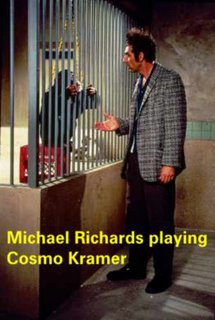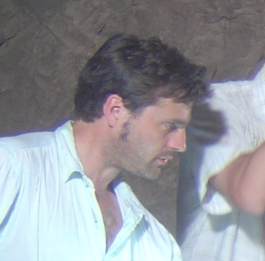Simulakramer
 slightly harder to find. I’m reminded of a friend, Robert Rust who worked at Disney World, repeating the in-joke of “how many bricks are in Cinderella’s Castle?” The answer is of course: none. It’s made of carved concrete and fiberglass. This falsity of materials is only a superficial level of spuriousness. The larger frame is that it is a copy of an image that is a fictional object in a movie. It is a copy that lacks an original in the material sense.
slightly harder to find. I’m reminded of a friend, Robert Rust who worked at Disney World, repeating the in-joke of “how many bricks are in Cinderella’s Castle?” The answer is of course: none. It’s made of carved concrete and fiberglass. This falsity of materials is only a superficial level of spuriousness. The larger frame is that it is a copy of an image that is a fictional object in a movie. It is a copy that lacks an original in the material sense. The past week saw a series of events unfold that depict the paradox of simulacra where fiction and the real have collided and the inability to disentangle marks the collapse of any grounding reality.
 A movie, The Queen, depicts the events behind the scenes of the royal family in the week after the death of Princess Diana. It is an unkind portrait and perhaps justifiably so. The queen’s husband, prince Phillip is the real loser in this portrayal. Now, this is not a documentary, so it’s just an actor playing Phillip- making him out to be quite a prick. The visual impact of cinema is notorious for replacing our self-generated visual images of texts.
A movie, The Queen, depicts the events behind the scenes of the royal family in the week after the death of Princess Diana. It is an unkind portrait and perhaps justifiably so. The queen’s husband, prince Phillip is the real loser in this portrayal. Now, this is not a documentary, so it’s just an actor playing Phillip- making him out to be quite a prick. The visual impact of cinema is notorious for replacing our self-generated visual images of texts.  Likewise, my image of the Doors will forever be Oliver Stones cinematic re-creation. On this level, Prince Phillip will never be able to escape the identity he has been handed by this piece of fiction. If the fiction has any basis in truth then assuredly, he really is the kind of person who won’t give a shit either. But now the real Phillip has a fuzzy relationship to his own identity where he will forever be measured as proximal or distant to a model that is in fact a copy. This collapse between real and copy, while cogent, is still not as good as the next example.
Likewise, my image of the Doors will forever be Oliver Stones cinematic re-creation. On this level, Prince Phillip will never be able to escape the identity he has been handed by this piece of fiction. If the fiction has any basis in truth then assuredly, he really is the kind of person who won’t give a shit either. But now the real Phillip has a fuzzy relationship to his own identity where he will forever be measured as proximal or distant to a model that is in fact a copy. This collapse between real and copy, while cogent, is still not as good as the next example.
 The busy week of simulation par excellence continues with the TV show “Seinfeld”’s co-star Michael Richards getting into trouble during a stand-up comedy routine. He poured out a tirade of racist filth in response to African American hecklers interrupting his live show. He plays a character on the television show, Cosmo Kramer, though he was not portraying this character during his outburst. The TV show is named “Seinfeld” after its star who is named
The busy week of simulation par excellence continues with the TV show “Seinfeld”’s co-star Michael Richards getting into trouble during a stand-up comedy routine. He poured out a tirade of racist filth in response to African American hecklers interrupting his live show. He plays a character on the television show, Cosmo Kramer, though he was not portraying this character during his outburst. The TV show is named “Seinfeld” after its star who is named  Jerry Seinfeld in real life. The real life Seinfeld appeared with Richards/Kramer in an apology. In the presence of his TV co-star, is Richards in character or not?- because there is no distinction between the two concepts for Seinfeld, standing next to him.
Jerry Seinfeld in real life. The real life Seinfeld appeared with Richards/Kramer in an apology. In the presence of his TV co-star, is Richards in character or not?- because there is no distinction between the two concepts for Seinfeld, standing next to him.
 But this is only the beginning. The character, Cosmo Kramer was inspired by someone who’s real life name is Kenny Kramer and lived across the hall from the TV show’s co-creator, Larry David. The real Kenny Kramer was rapidly contacted by various talk-shows after the fake Kramer’s outburst to get his opinion. They
But this is only the beginning. The character, Cosmo Kramer was inspired by someone who’s real life name is Kenny Kramer and lived across the hall from the TV show’s co-creator, Larry David. The real Kenny Kramer was rapidly contacted by various talk-shows after the fake Kramer’s outburst to get his opinion. They  proceeded to ask him if this would affect his business; the real Kramer has spent the last 11 years running “Seinfeld” tours of
proceeded to ask him if this would affect his business; the real Kramer has spent the last 11 years running “Seinfeld” tours of


0 Comments:
Post a Comment
<< Home